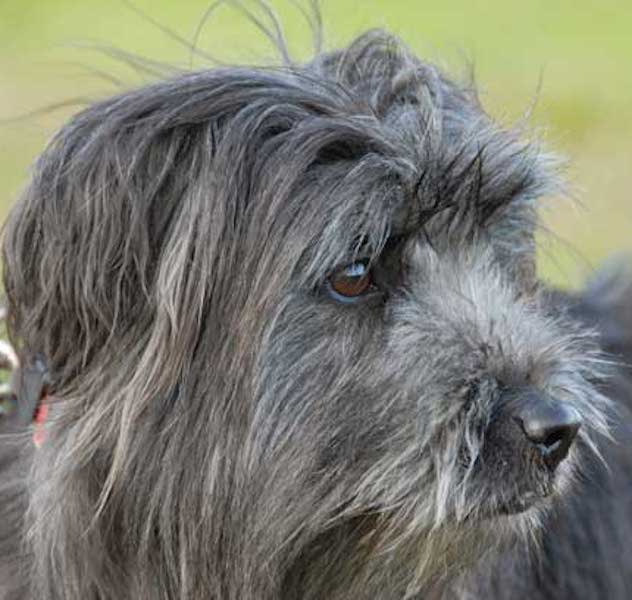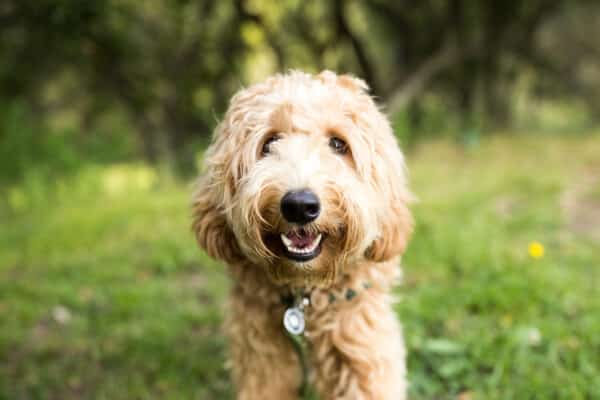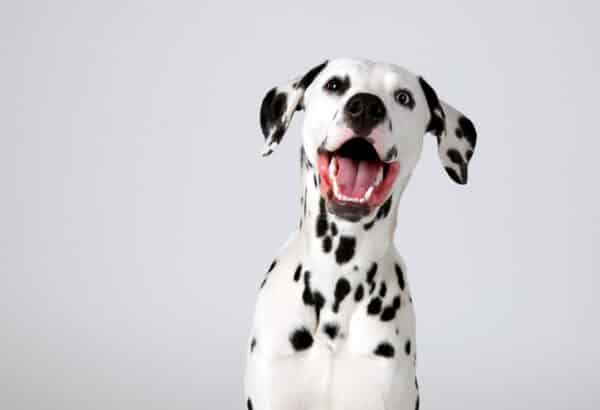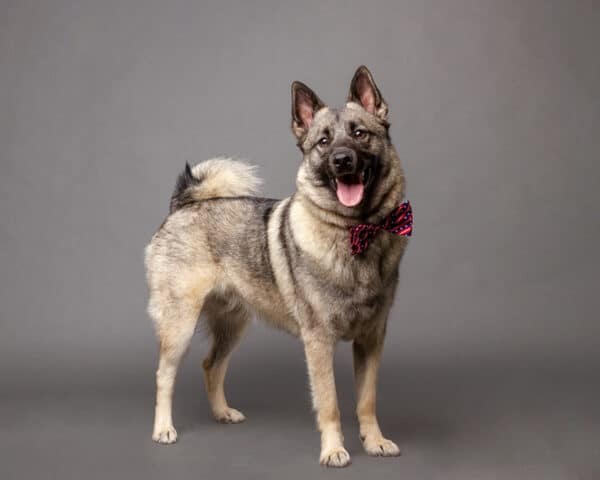Quick Facts
- Weight: 15 to 35 pounds
- Height: 15 to 21 inches
The Look of a Pyrenean Shepherd
While the Great Pyrenees is extra-large and intimidating, the Pyrenean Shepherd is much smaller and faster, more like a soccer player than a goalie. There are two distinct types of the Pyrenean Shepherd: the Smooth-Faced and the Rough-Faced.
The Smooth-Faced appears more like an Australian Shepherd, while the Rough-Faced is a bit like a Briard. Rough-Faced dogs have long bodies, while Smooth-Faced ones appear more square. The coat of the Rough-Faced variety can be demi-long or long, with little undercoat. The Smooth-Faced variety has short, soft, smooth hairs around the muzzle and slightly longer hair elsewhere. Both coats come in fawn, gray, and brindle.
Traits
- Versatile working skills
- Unique triangular head
- Intelligent, lively personality
- Lightness on its feet
- Lifespan: 12 to 15 years
Ideal Human Companion
- Active singles and families
- Those with time to train this dog and keep up with commands
- Those looking for low-maintenance grooming
- Those who don’t mind practical jokes played on them once in awhile
What They Are Like to Live With
This is a dog for active singles or families who don’t mind their Pyrenean Shepherd poking its nose into everything that is going on. They are engaged, interactive, playful dogs, though the foremost thing on their minds is work. You and your dog will both benefit from some sort of organized sport, or work such as agility or herding trials.
“Active” and “intelligent” are the key words to associate with this breed. Unless you can exercise your dog a few hours a day, this isn’t the breed for you. You also need a good sense of humor to appreciate these dogs’ smart, mischievous acts.
Things You Should Know
These dogs are fast and think on their feet, so you have to be able to keep up with them. Pyrenean Shepherds kept as companion dogs may try to herd humans or other household animals. This behavior can be modified to a certain extent, but it’s likely your dog will maintain some of this instinct.
This is a hearty breed in general, but Pyrenean Shepherds can have trouble with slipped kneecaps, hip dysplasia, and retinal atrophy.
Pyrenean Shepherd History
It is unknown when this breed originated, but it was developed as a working companion for the Great Pyrenees; it would herd flocks of sheep while the Great Pyrenees stood guard over them.
The Pyrenean Shepherd came to North America in the 19th century to be used as herders. They made names for themselves by serving alongside soldiers during World War I as guard dogs, couriers, and search-and-rescue assistants.
Pyrenean Shepherd advocates established the breed standards in the 1970s. The breed was recognized by the AKC in 2009. Today, this is a companion dog and a working dog who particularly excels at search and rescue work.





